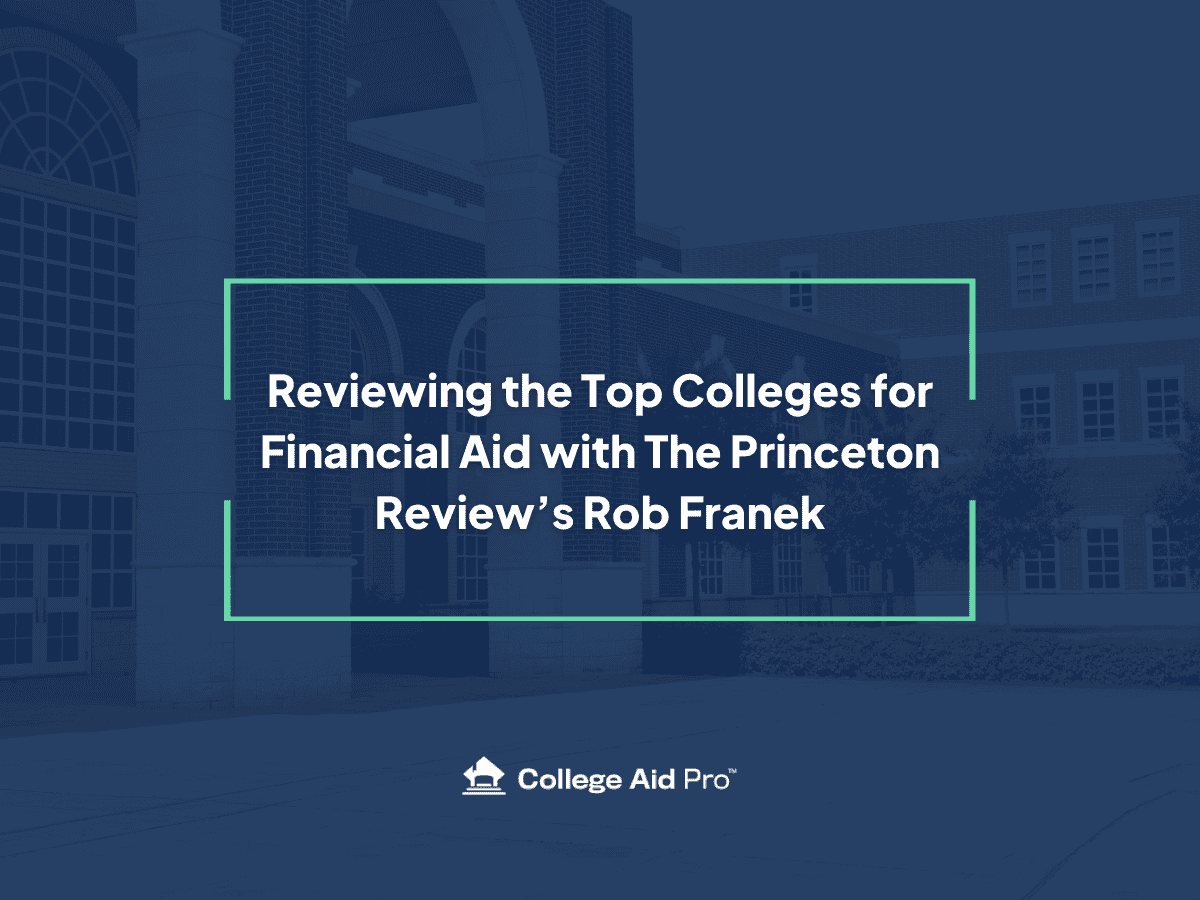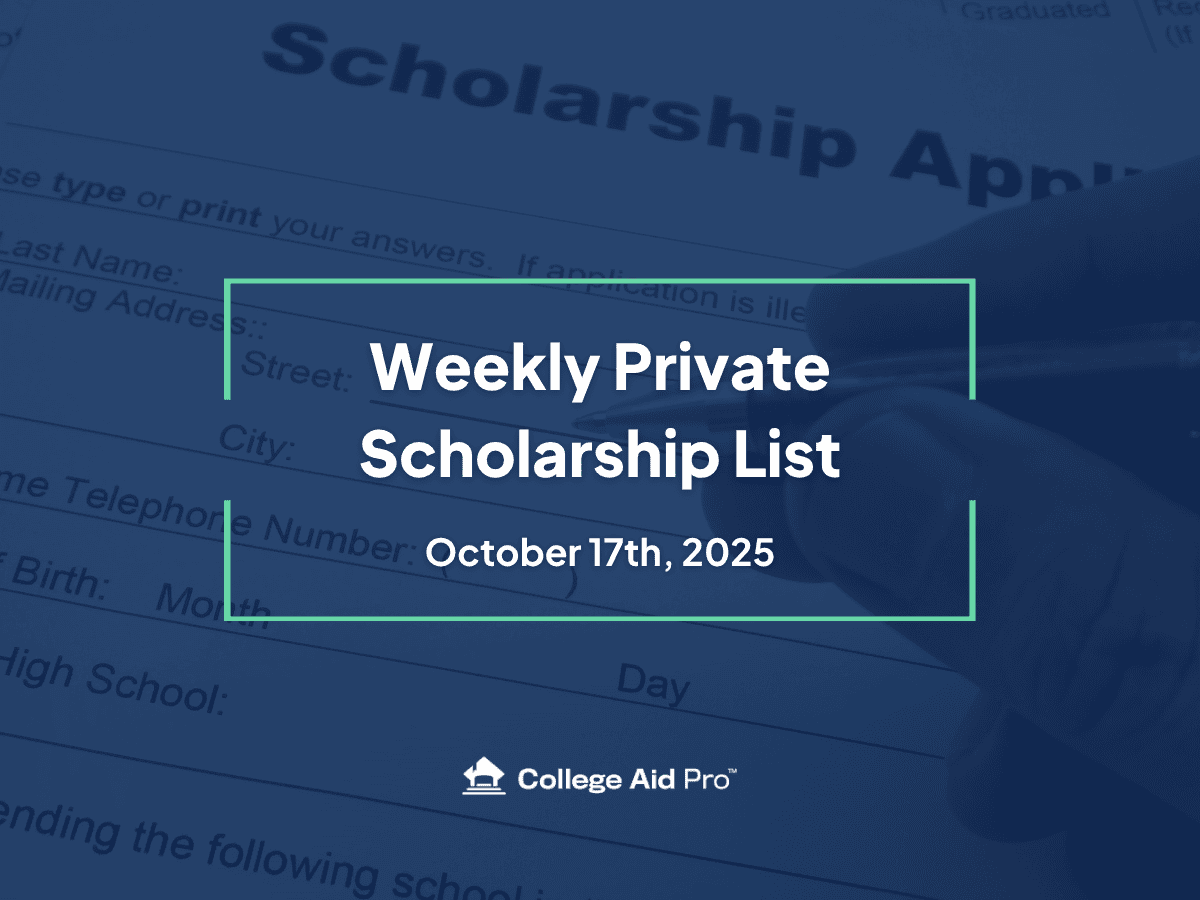Reviewing the Top Colleges for Financial Aid with The Princeton Review’s Rob Franek
When it comes to choosing the right college, most families focus on where a student will thrive — but just as important is how to pay for it. In this episode of Ol’ College Try, host Matt Carpenter sits down with Rob Franek, Editor-in-Chief of The Princeton Review, to break down their newest list of the Top Colleges That Give the Most Financial Aid and share what every family needs to know about finding the best value in higher education.
If you think expensive private schools are automatically out of reach — think again. This conversation shines a light on why sticker price isn’t the same as what you’ll actually pay, and how some of the nation’s most prestigious colleges can turn out to be surprisingly affordable.
🧭 How The Princeton Review Ranks Financial Aid Leaders
The Princeton Review’s “Best Colleges for Financial Aid” list is based on extensive student survey data from its annual Best 391 Colleges project. More than 170,000 students across the country shared honest feedback about their experiences with financial aid, scholarships, and affordability.
The results might surprise you.
This ranking isn’t based on published tuition rates — it’s based on what students actually experience. From satisfaction with aid packages to accessibility of scholarship programs, the list highlights schools that go above and beyond to make college financially feasible.
Rob explains:
“Our list is built on student voices — their real experiences with cost, aid, and support. The goal is to empower families to have informed, confident conversations about affordability.”
💸 Sticker Price vs. Real Cost: What Families Need to Know
One of the biggest myths families face? Believing that a higher sticker price means a school is automatically too expensive.
In reality, many colleges with the highest sticker prices offer the most generous aid packages.
Take Washington and Lee University — number one on The Princeton Review’s list. Its official cost of attendance is around $87,000, but the average scholarship is roughly $67,000, bringing the real cost closer to $19,500 per year. That’s less than the national average for a year at a public university.
As Matt points out,
“It’s counterintuitive — there’s nothing else in our lives where the sticker price and what we actually pay are so different. But that’s the college world.”
The key is understanding that average costs don’t tell your story. Every family’s financial situation — income, assets, and even household structure — plays a huge role in determining how much they’ll actually pay.
🧮 Need-Based vs. Merit-Based Aid: The Big Picture
Financial aid isn’t one-size-fits-all. Families need to understand the two main types of aid:
- Need-Based Aid: Based on family financial circumstances. Typically determined through FAFSA or the CSS Profile.
- Merit-Based Aid: Based on student achievements like GPA, test scores, or leadership.
Many colleges combine both types — but elite schools like Princeton or Amherst only offer need-based aid. They don’t give out scholarships for grades or test scores.
That means a student’s admission profile and a family’s financial situation both determine affordability. As Matt says,
“At Princeton, nobody’s walking around on a scholarship. Your financial aid is based purely on need — but for those who qualify, the awards can be incredibly generous.”
🏫 Colleges That Deliver Real Value
Alongside the well-known names like Princeton and Vanderbilt, the list includes lesser-known but financially powerful schools such as:
- Gettysburg College
- Mount Holyoke College
- Dickinson College
- Catawba College (NC)
These institutions are recognized for offering substantial merit-based scholarships, helping families reduce costs even without qualifying for need-based aid.
And it’s not just private schools that stand out. Brigham Young University (BYU) also made the list for its combination of low tuition and strong aid offerings — especially for members of the Church of Latter-day Saints and through regional tuition agreements like the Western Undergraduate Exchange (WUE).
🌎 Regional Reciprocity and Tuition Discounts
Another overlooked factor in college affordability? Regional reciprocity agreements.
In some states, students can attend an out-of-state public university for close to in-state tuition prices. The WUE program, for example, allows students from states like Washington, Oregon, and Montana to attend participating colleges — such as BYU — at discounted rates.
While New England has a similar program, it’s more limited. Massachusetts students, for instance, only qualify for tuition discounts if they pursue a major not offered by in-state public universities.
These programs vary widely, so researching them early can reveal hidden affordability opportunities families might otherwise miss.
🧠 Why Early Planning Is the Ultimate Advantage
Both Matt and Rob agree: the earlier families start planning, the better. Talking about costs, savings, and financial aid early in high school provides a huge competitive advantage.
“If you wait until senior year to think about money, it’s too late,” Matt notes. “Early awareness lets families build a smarter college list — one that fits both academically and financially.”
Using tools like MyCAP gives families a clear picture of their likely costs before they ever apply, saving time, money, and stress.
🤝 Why College Aid Pro and The Princeton Review Partner Up
This episode highlights why College Aid Pro and The Princeton Review have teamed up: to bring together the best of both worlds — admissions expertise and financial aid strategy.
“We know how confusing this process is,” Matt says. “That’s why we partner with leaders like The Princeton Review — to help families navigate both sides of the equation: getting in, and affording it.”
🎧 Listen & Learn
If you’re a family planning for college, this episode is a must-listen.
Tune in to hear:
- How The Princeton Review ranks colleges for financial aid
- Why sticker price ≠ real cost
- How to find your best financial fit
- Insider tips on aid, scholarships, and smart college planning
🎙️ Listen now: Top Colleges That Give the Most Financial Aid with The Princeton Review’s Rob Franek — on The Old College Try Podcast.



